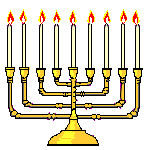The Militia the Founders Envisioned, and What Remains Today
By: Michael Boldin|Published on: Aug 15, 2025
“Who are the militia? They consist now of the whole people.”
George Mason cut to the heart of it: the militia was not a government creation, but the people themselves.
That simple truth has been twisted, ignored, or totally forgotten.
Say the word “militia” today and most people look at you like you’re a fringe nutcase. But the founding generation saw it differently. They viewed a well-armed and well-trained people as the backbone of liberty, the essential security of a free republic.
The Constitution’s militia clauses were supposed to secure that principle. The Anti-Federalists warned they would do the opposite – and time has proven them right.
CITIZEN MILITIA VS. STANDING ARMY
This story really begins with a principle most Americans have forgotten, and most were never even taught: the choice between a citizen militia and a permanent professional standing army.
Henry Knox, Washington’s Secretary of War, reinforced this: in a free society, the ultimate safeguard had to be an armed people, themselves.
“An energetic national militia is to be regarded as the Capital security of a free republic; and not a standing army, forming a distinct class in the community.”
That view was widespread because almost the entire founding generation viewed standing armies, especially large permanent ones, as one of the greatest dangers to liberty. A perfect example of this view came from the great revolutionary war hero Joseph Warren.
“It is further certain, from a consideration of the nature of mankind, as well as from constant experience, that standing armies always endanger the liberty of the subject.”
The same warning carried forward to the ratification debates over the Constitution. “A Democratic Federalist,” possibly Samuel Bryan, pointed to the long record of history. From every angle, the conclusion was the same: a standing army was the single greatest danger.
“The experience of past ages, and the result of the enquiries of the best and most celebrated patriots have taught us to dread a standing army above all earthly evils.”
And Tench Coxe drove the distinction home. A militia of the people worked for the people, defending their own freedom. A professional army was nothing but the tool of those in power. And people in power always find ways to use that power for the worst.
“There is a wide difference between the troops of such a commonwealth as ours, founded on equal and unalterable principles, and those of a regal government, where ambition and oppression are the profession of the king. In the first case, a military officer is the occasional servant of the people, employed for their defence; in the second, he is the ever ready instrument to execute the schemes of conquest or oppression, with which the mind of his royal master may be disturbed.”
MILITIA IN THE CONSTITUTION
James Madison tied the whole question of liberty to the militia itself. What others had warned about in theory, he pressed as a principle to be written into the Constitution itself.
“As the greatest danger to liberty is from large standing armies, it is best to prevent them, by an effectual provision for a good Militia.”
Tench Coxe tied those principles together into one clear doctrine. The militia was the people themselves, and he affirmed Madison’s view that they made a standing army unnecessary.
“The militia, who are in fact the effective part of the people at large, will render many troops quite unnecessary.”
He explained why. An armed population, by sheer numbers, could act as a check on regular troops, because the geographic situation of the country meant there would seldom be many of them in the first place.
“They will form a powerful check upon the regular troops, and will generally be sufficient to overawe them – for our detached situation will seldom give occasion to raise an army, though a few scattered companies may often be necessary.”
The framers sought to write these principles into the Constitution, where the word “militia” is included six times.
Article II, Section 2 made the president commander in chief not only of the army and navy, but also of the militia of the several states when called into the actual service of the United States.
Article I, Section 8, Clause 15 explained when that could happen. Congress could provide for calling forth the militia only in three situations: “to execute the Laws of the Union, suppress Insurrections and repel Invasions.” Clause 16 delegated to Congress the power to “provide for organizing, arming, and disciplining, the Militia, and for governing such Part of them as may be employed in the Service of the United States.”
That last power would become the heart of the coming debate.
The Bill of Rights added two more mentions of the word militia. The Fifth Amendment exempted cases “arising in the land or naval forces, or in the Militia, when in actual service in time of War or public danger.”
The Second Amendment put the principle beyond dispute, tying the people’s right to arms directly to the survival of a free state.
“A well-regulated Militia, being necessary to the security of a free State, the right of the people to keep and bear Arms, shall not be infringed.”
More:
https://tenthamendmentcenter.com/2025/08/15/the-militia-the-founders-envisioned-and-what-remains-today/







































